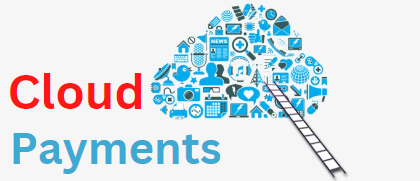Cloud Payments for Non-profit Organizations: A Detailed Guide
In today’s digital age, non-profit organizations are increasingly turning to cloud payment systems to streamline their financial operations and enhance their fundraising efforts. Cloud payments refer to the process of accepting and processing payments through online platforms and services, eliminating the need for traditional paper-based transactions.
This comprehensive guide aims to provide non-profit organizations with a detailed understanding of cloud payments, including their benefits, key features, implementation process, security considerations, integration with existing systems, and cost-saving potential.
Understanding Cloud Payment Systems for Non-profits
Cloud payment systems, also known as online payment gateways, are platforms that enable non-profit organizations to accept payments and donations securely over the internet. These systems allow donors to make contributions using various payment methods, such as credit cards, debit cards, and electronic transfers. The cloud payment system processes the transaction and securely transfers the funds to the non-profit’s designated bank account.
Cloud payment systems offer several advantages over traditional payment methods. They provide a convenient and user-friendly experience for donors, allowing them to make contributions from anywhere, at any time. Additionally, these systems automate the payment process, reducing the administrative burden on non-profit organizations and enabling them to focus on their mission.
Benefits of Cloud Payments for Non-profit Organizations
- Enhanced Donor Experience: Cloud payment systems offer a seamless and user-friendly experience for donors, allowing them to make secure and convenient online donations. This accessibility can lead to increased donor engagement and higher donation rates.
- Improved Fundraising Efficiency: Cloud payment systems automate many aspects of the donation process, such as recurring donations, donor data management, and reporting. This automation saves time and resources, enabling non-profit organizations to focus on their core mission and fundraising strategies.
- Expanded Payment Options: Cloud payment systems support a wide range of payment methods, including credit/debit cards, mobile wallets, and electronic bank transfers. By offering multiple payment options, non-profit organizations can cater to the preferences of their donors, resulting in higher conversion rates.
- Real-time Reporting and Analytics: Cloud payment systems provide real-time reporting and analytics capabilities, allowing non-profit organizations to track and analyze donation trends, donor behavior, and campaign performance. These insights enable data-driven decision-making and the optimization of fundraising strategies.
- Cost Savings: Cloud payment systems eliminate the need for manual data entry, paper-based transactions, and physical storage of financial records. This reduction in administrative tasks and associated costs can result in significant savings for non-profit organizations.
Key Features and Functionality of Cloud Payment Systems
- Online Donation Forms: Cloud payment systems offer customizable online donation forms that can be embedded on non-profit organizations’ websites or shared through email and social media. These forms capture donor information and securely process payments.
- Recurring Donations: Cloud payment systems enable non-profit organizations to set up recurring donation options, allowing donors to contribute on a regular basis. This feature enhances donor retention and provides a predictable revenue stream.
- Donor Management: Cloud payment systems include donor management functionalities, such as donor profiles, contact information, and donation history. These features facilitate personalized communication, targeted fundraising campaigns, and donor segmentation.
- Payment Gateway Integration: Cloud payment systems integrate with payment gateways, ensuring secure and PCI-compliant payment processing. This integration enables real-time authorization, fraud prevention, and seamless transfer of funds to non-profit organizations’ bank accounts.
- Reporting and Analytics: Cloud payment systems generate comprehensive reports and analytics dashboards, providing non-profit organizations with insights into donation trends, donor demographics, and campaign performance. These features support data-driven decision-making and fundraising optimization.
Donation Management Solutions in the Cloud for Non-profits
Cloud payment systems often come equipped with donation management solutions that enable non-profits to track and manage their donations effectively. These solutions allow organizations to store donor information securely, track donation history, and generate reports for financial and tax purposes.
Additionally, donation management solutions in the cloud can automate recurring donations, making it easier for donors to contribute regularly. This feature is particularly beneficial for non-profits that rely on consistent funding to support their programs and initiatives.
Fundraising Campaigns and Event Ticketing with Cloud Payment Systems
Cloud payment systems play a crucial role in facilitating fundraising campaigns and event ticketing for non-profit organizations. These systems enable non-profits to create customized donation pages and event registration forms, making it easy for donors to contribute and register for events.
Cloud payment systems also offer features such as peer-to-peer fundraising, allowing non-profits to leverage their supporters’ networks to expand their reach and raise more funds. By empowering donors to create their own fundraising pages and share them with their friends and family, non-profits can tap into new donor pools and increase their fundraising potential.
Enhancing Donor Engagement through Cloud-based Payment Platforms
Cloud-based payment platforms provide non-profit organizations with tools to enhance donor engagement and build lasting relationships. These platforms often include features such as email marketing integration, donor segmentation, and personalized communication options.
By leveraging these features, non-profits can send targeted and personalized messages to their donors, expressing gratitude, providing updates on their impact, and inviting them to get involved in other ways. This level of engagement can foster a sense of connection and loyalty among donors, leading to increased support and long-term partnerships.
Ensuring Security and Compliance in Cloud Payments for Non-profit Organizations
Security and compliance are critical considerations when implementing cloud payment systems for non-profit organizations. To ensure the safety of donor information and financial data, non-profit organizations should follow these best practices:
- Choose a PCI-compliant Provider: Non-profit organizations should select a cloud payment provider that is certified as Payment Card Industry Data Security Standard (PCI DSS) compliant. This certification ensures that the provider follows industry-standard security protocols for handling credit card information.
- Implement Encryption and Tokenization: Non-profit organizations should ensure that all sensitive data, such as credit card numbers and donor information, is encrypted both during transmission and storage. Encryption protects data from unauthorized access, while tokenization replaces sensitive data with unique tokens, further enhancing security.
- Regularly Update Software and Systems: Non-profit organizations should keep their cloud payment system, as well as any integrated software and systems, up to date with the latest security patches and updates. Regular updates help address vulnerabilities and protect against emerging threats.
- Train Staff on Security Best Practices: Non-profit organizations should provide training to staff and volunteers on security best practices, such as creating strong passwords, recognizing phishing attempts, and securely handling donor information. This training helps prevent human errors and ensures a culture of security within the organization.
- Conduct Regular Security Audits: Non-profit organizations should periodically conduct security audits to assess the effectiveness of their security measures and identify any potential vulnerabilities. These audits can be performed internally or by engaging external security experts.
Integrating Cloud Payments with Existing Non-profit Systems and Processes
Integrating cloud payment systems with existing non-profit systems and processes can enhance efficiency and streamline operations. Here are some key considerations for successful integration:
- CRM Integration: Non-profit organizations should ensure that the chosen cloud payment system integrates seamlessly with their customer relationship management (CRM) platform. This integration allows for automatic syncing of donor data, eliminating the need for manual data entry and ensuring accurate and up-to-date donor profiles.
- Fundraising Management Integration: Non-profit organizations should assess the compatibility of the cloud payment system with their fundraising management tools. Integration with these tools enables streamlined campaign management, automated reporting, and centralized donor data.
- Accounting System Integration: Non-profit organizations should consider integrating the cloud payment system with their accounting software. This integration automates financial reporting, eliminates manual data entry, and ensures accurate and timely financial records.
- Event Management Integration: Non-profit organizations that host fundraising events should evaluate the integration capabilities of the cloud payment system with their event management software. This integration enables seamless registration, ticketing, and payment processing for event attendees.
- Data Synchronization: Non-profit organizations should ensure that data is synchronized between the cloud payment system and other integrated systems in real-time or at regular intervals. This synchronization ensures that donor information, transaction data, and financial records are consistent across all systems.
Maximizing Efficiency and Cost Savings with Cloud Payments for Non-profit Organizations
Cloud payment systems offer non-profit organizations the opportunity to maximize efficiency and achieve cost savings. Here are some strategies to leverage the full potential of cloud payments:
- Automate Recurring Donations: Non-profit organizations should encourage donors to set up recurring donations through the cloud payment system. Automating recurring donations reduces administrative tasks, ensures a predictable revenue stream, and enhances donor retention.
- Streamline Reporting and Analytics: Non-profit organizations should leverage the reporting and analytics capabilities of the cloud payment system to gain insights into donation trends, donor behavior, and campaign performance. These insights can inform targeted fundraising strategies and optimize resource allocation.
- Personalize Donor Communication: Non-profit organizations should utilize the donor management features of the cloud payment system to personalize communication with donors. This personalization can include tailored thank-you messages, updates on the impact of donations, and targeted fundraising appeals.
- Leverage Integration with Fundraising Tools: Non-profit organizations should take advantage of the integration between the cloud payment system and fundraising management tools. This integration enables streamlined campaign management, automated reporting, and centralized donor data, resulting in time and cost savings.
- Optimize Donation Forms: Non-profit organizations should regularly review and optimize their online donation forms to maximize conversion rates. This optimization can include reducing form fields, simplifying the donation process, and providing multiple payment options.
Choosing the Right Cloud Payment Provider for Non-profit Organizations
When selecting a cloud payment provider, non-profit organizations should consider the following factors:
- Security and Compliance: Non-profit organizations handle sensitive donor information and financial data, making security and compliance a top priority. The chosen cloud payment provider should adhere to industry-standard security protocols, such as encryption, tokenization, and regular security audits. Additionally, they should comply with relevant data protection regulations, such as the General Data Protection Regulation (GDPR) or the Payment Card Industry Data Security Standard (PCI DSS).
- Integration Capabilities: Non-profit organizations should assess the compatibility of the cloud payment provider’s system with their existing software and systems, such as customer relationship management (CRM) platforms or fundraising management tools. Seamless integration ensures smooth data flow and eliminates the need for manual data entry.
- Customization and Branding: The chosen cloud payment provider should offer customization options for donation forms, ensuring a consistent branding experience for donors. Customization features may include the ability to add logos, colors, and personalized messaging.
- Pricing Structure: Non-profit organizations should evaluate the pricing structure of cloud payment providers, considering factors such as transaction fees, monthly subscriptions, and additional charges for advanced features. It is essential to choose a provider that aligns with the organization’s budget and fundraising goals.
- Customer Support: Non-profit organizations should assess the level of customer support provided by the cloud payment provider. Prompt and reliable customer support ensures smooth operations and timely resolution of any issues or concerns.
Common Challenges and Solutions in Adopting Cloud Payments for Non-profit Organizations
While cloud payments offer numerous benefits, non-profit organizations may encounter challenges during the adoption process. Here are some common challenges and their solutions:
- Resistance to Change: Non-profit organizations may face resistance from staff and volunteers who are accustomed to traditional payment methods. To overcome this challenge, organizations should provide comprehensive training, communicate the benefits of cloud payments, and address any concerns or misconceptions.
- Data Migration: Non-profit organizations may face challenges when migrating donor data from existing systems to the cloud payment system. To ensure a smooth migration, organizations should plan and execute data migration in stages, conduct thorough testing, and have a backup plan in case of any issues.
- Integration Complexity: Integrating the cloud payment system with existing systems can be complex, especially if the systems have different data structures or APIs. Non-profit organizations should engage IT experts or consultants to assist with the integration process and ensure compatibility between systems.
- Security Concerns: Non-profit organizations may have concerns about the security of donor information and financial data in the cloud. To address these concerns, organizations should thoroughly evaluate the security measures of the chosen cloud payment provider, implement encryption and tokenization, and regularly update software and systems.
- Cost Considerations: Non-profit organizations may be concerned about the cost of implementing and maintaining a cloud payment system. To mitigate this challenge, organizations should carefully evaluate pricing structures, consider the potential cost savings in administrative tasks, and assess the long-term benefits of improved efficiency and donor engagement.
Implementing Cloud Payments: Step-by-Step Guide for Non-profit Organizations
- Assess Organizational Needs: Non-profit organizations should evaluate their current payment processes, identify pain points, and define their requirements for a cloud payment system. This assessment should consider factors such as donation volume, payment methods, integration needs, and reporting requirements.
- Research and Shortlist Providers: Non-profit organizations should research and shortlist cloud payment providers that align with their needs and preferences. This research can include reading reviews, comparing features and pricing, and seeking recommendations from other non-profit organizations.
- Request Demos and Trials: Non-profit organizations should request demos or trials from the shortlisted providers to assess the user interface, ease of use, and compatibility with existing systems. This step allows organizations to experience the functionality firsthand and make an informed decision.
- Evaluate Security and Compliance: Non-profit organizations should thoroughly evaluate the security measures and compliance standards of the chosen cloud payment provider. This evaluation should include reviewing security certifications, encryption protocols, and data protection policies.
- Plan for Integration: Non-profit organizations should plan for the integration of the cloud payment system with their existing software and systems. This may involve working with the provider’s integration team or engaging an external IT consultant to ensure a smooth and seamless integration process.
- Train Staff and Volunteers: Non-profit organizations should provide training to staff and volunteers on how to use the cloud payment system effectively. This training should cover donation processing, donor management, reporting, and any other relevant features.
- Launch and Promote: Once the cloud payment system is implemented and integrated, non-profit organizations should launch and promote the new payment options to their donors. This promotion can include email campaigns, social media announcements, and website updates.
Frequently Asked Questions about Cloud Payments for Non-profits
Q.1: What is a cloud payment system?
Answer: A cloud payment system is an online platform that enables non-profit organizations to accept payments and donations securely over the internet.
Q.2: How do cloud payment systems benefit non-profit organizations?
Answer: Cloud payment systems offer convenience for donors, streamline donation management, provide valuable analytics, and enhance donor engagement.
Q.3: Are cloud payment systems secure?
Answer: Yes, cloud payment systems employ robust security measures, such as encryption and tokenization, to protect sensitive donor information and ensure secure transactions.
Q.4: What compliance requirements should non-profits consider when choosing a cloud payment provider?
Answer: Non-profits should consider compliance requirements such as Payment Card Industry Data Security Standard (PCI DSS) compliance when selecting a cloud payment provider.
Q.5: How can cloud payment systems enhance donor engagement?
Answer: Cloud payment systems often include features such as email marketing integration, donor segmentation, and personalized communication options, allowing non-profits to send targeted and personalized messages to their donors.
Conclusion
Cloud payments have revolutionized the way non-profit organizations accept donations, manage their finances, and engage with donors. These systems offer convenience, efficiency, and security, enabling non-profits to focus on their mission and maximize their fundraising efforts. By leveraging cloud payment systems, non-profit organizations can streamline their operations, enhance donor engagement, and ultimately make a greater impact in their communities.











